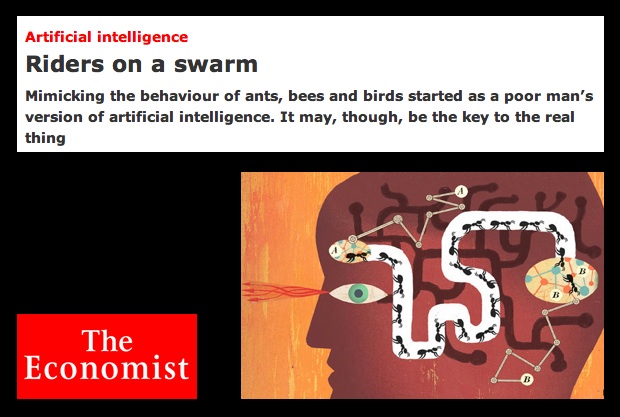This week’s issue of the Economist has an interesting article entitled Riders on a Swarm. Among other things, the article discusses how attempts to computationally model ant, bee and bird behavior have offered insight into major problems in artificial intelligence.
For those not familiar, the examples discussed within the article are classic models in the science of complex systems. For example, here is the Netlogo implementation of bird flocking. It will run in your browser but requires Java 4.1 or higher. If you decide to take a look — please click setup – then go to make the model run. Once inside the Netlogo GUI, you can explore how various parameter configurations impact the model’s outcomes.
One of the major insights of the bird flocking model is how random starting conditions and local behavioral rules can lead to the emergence of observed behavioral patterns that appear (at least on first glance) to be orchestrated by some sort of top down command structure.
This is, of course, not the case. The model is bottom up and not top down. Both the simplicity and the bottom up flavor of the model are apparent when you explore the model’s code. For those interested, I will take a second and plug the slides from my ICPSR class. In the class, I dedicated about an hour of class time to bird flocking model. Click here for the slides. In the slides, I walk through some of the important features of the code (discussion starts on slide 16).

